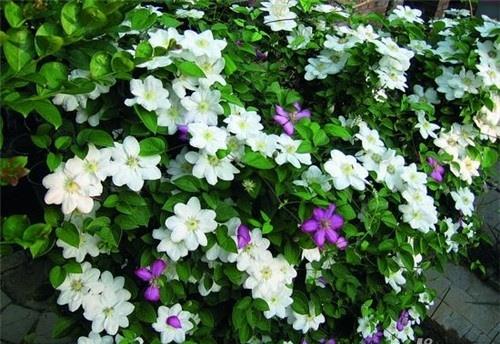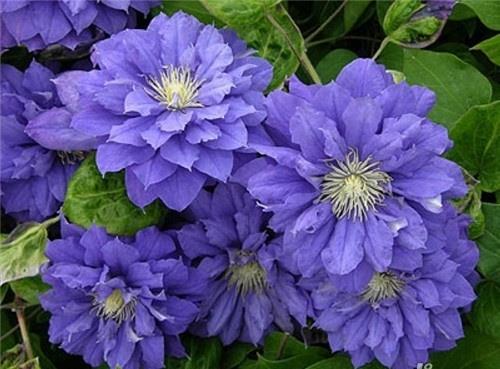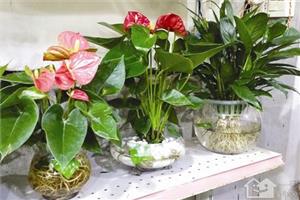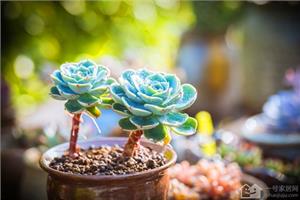How to plant clematis plant diseases and insect pests control measures
Clematis is a very beautiful flower, and there are many owners of clematis. But very few people really know how to raise clematis. Let's learn how to plant clematis and how to control diseases and insect pests of clematis.
Clematis transplantation
1. Time to transplant:
Potted clematis can be transplanted at any time of the year, because clematis plants only need to be taken out of the pot and planted, without any damage to the roots of clematis. Of course, the ideal transplanting time for clematis is in spring or early autumn. During this period, the soil temperature is relatively warm, and the soil water content is more suitable, which can provide the best living environment for the plants that have just changed the environment. But as long as we can dig holes, we can plant clematis even in winter, even if it freezes soon, it won't be a big problem.
2. Steps to transplant:
There is no standard size for digging the pit. The size of the pit depends on the quality of the soil. If the soil is loose, fertile and well drained, it can be 30 centimeters deep or a shovel and a half deep. If on the contrary, the soil is thick and sticky, it is best to dig to 50-60cm depth to make a good drainage layer. As for the width, 30-40cm is needed so that the root can be put in freely.
Planting method of clematis
1, soil: like fertile, well-drained alkaline loam, avoid stagnant water or summer drought and can not retain water.
2. Watering: endure early and be afraid of waterlogging. In the rainy season, due to high temperature and humidity, it is easy to die of disease and death, so you can keep the basin soil moist during the growing season. Do not water too much, otherwise the roots are easy to rot.
3. Sunshine: potted clematis are cultivated under full light from autumn to early spring of the next year, without shade, and strong light after entering summer, which will lead to aging and yellowing of clematis leaves, poor growth, and need proper shading.
4. Temperature: strong adaptability, cold resistance, can withstand-20 low temperature.
5. Fertilization: the demand for fertilizer is not high, and liquid fertilizer can be applied every half a month or so during the peak growth period.

Control measures of diseases and insect pests of clematis
1. Leaf miner:
The larvae of leaf miners drill through the leaves to form an irregular gray-white curve, usually with a large stain at the end of the curve. They usually have no effect on the growth of plants, but affect the ornamental quality of leaves. Usually, in the early days, you can pinch off the stain at the end of the leaf surface curve, so that you can get rid of the larvae of leaf miners, or cut off the damaged leaves and burn them. If the affected area of the plant is relatively large, some pesticides should be sprayed properly.
2. Fusarium wilt:
Clematis, a variety of clematis with large flowers, is more likely to be infected with Fusarium wilt, which infects and develops within hours. It leads to the wilting of the whole branch and even the whole plant. The disease usually occurs when the florescence is about to begin, attacking the roots on the surface of the soil layer, but it is important to understand that the disease never infects the roots of clematis, and after pruning the root branches of clematis in the following ways, clematis usually regain its vitality without the use of chemicals. The attack of Fusarium wilt is very rapid, from the signs of the disease will immediately turn to one or more branches infected, except for only one branch of a plant, all branches of the whole plant are less likely to be infected at the same time.
Remove the soil from the root, determine the location of branch necrosis, usually this position is 5-8cm down on the surface of the soil layer, cut the branch below the necrotic position, if you are not sure where the necrosis is, trim near the root, remove the removed soil, and replace it with new soil so that clematis can be better restored, during this time, there is no need to water, watering will affect re-sprouting.

The above is the relevant introduction of this article, I believe you have a simple understanding of this after reading it, if necessary, you can continue to pay attention to the No. 1 home network for more information.
- Prev

If plants have pests, it doesn't matter to teach you all kinds of convenient life insecticidal methods.
If plants have pests, it doesn't matter to teach you all kinds of convenient life insecticidal methods.
- Next

Succulent plants are so cute. How can we take care of them?
Succulent plants are so cute. How can we take care of them?
Related
- Wuhan Hospital Iron Tree Blooming Result Was Instantly Frightened by the Gardener Master
- Which variety of camellia is the most fragrant and best? Which one do you like best?
- What is the small blue coat, the breeding methods and matters needing attention of the succulent plant
- Dormancy time and maintenance management of succulent plants during dormancy
- Minas succulent how to raise, Minas succulent plant pictures
- What are the varieties of winter succulent plants
- How to raise succulent plants in twelve rolls? let's take a look at some experience of breeding twelve rolls.
- Attention should be paid to water control for succulent plants during dormant period (winter and summer)
- Watering experience of twelve rolls of succulent plants
- Techniques for fertilizing succulent plants. An article will let you know how to fertilize succulent plants.

